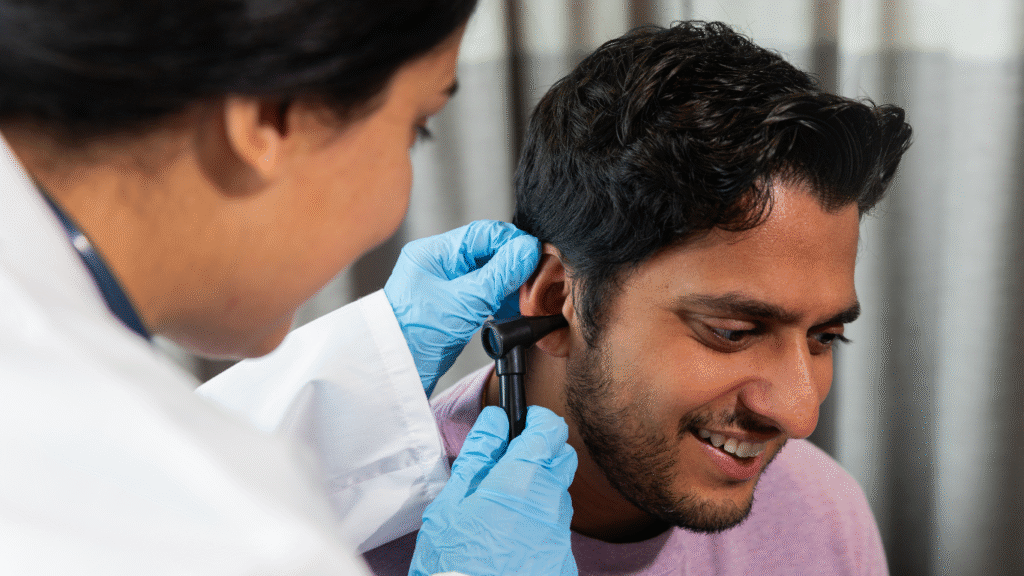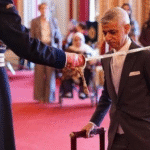The phrase “which ear is the gay ear” has floated around for decades, sparking curiosity, confusion, and sometimes heated debates. It refers to an old urban legend suggesting that wearing an earring in a specific ear—usually the right—signals that someone is gay. But where did this idea come from? Is there any truth to it, or is it just a quirky piece of cultural history? Let’s dive into the origins, evolution, and modern take on this question, exploring how a simple fashion choice became a loaded symbol. From 1980s subcultures to today’s fluid expressions of identity, this article will unravel the myth and what it means now.
The Origins of the “Gay Ear” Myth
The “gay ear” idea kicked off in the late 20th century, particularly in the 1980s. Back then, men wearing earrings were already pushing against traditional norms. Earrings were mostly seen as women’s accessories, so a guy sporting one was making a bold statement. Within this context, rumors started that the ear you chose for your earring could signal your sexual orientation. The right ear was often pegged as the “gay ear,” while the left supposedly meant you were straight. This wasn’t based on any official rule but grew out of underground subcultures, especially in urban areas like New York and San Francisco.
Why the right ear? Some say it tied to the handkerchief code, a system used in gay communities to signal preferences through colored bandanas. Others think it was just a way for people to create insider knowledge in a time when being openly gay could be risky. Whatever the reason, the idea spread like wildfire, fueled by whispers in bars, clubs, and social circles. It became a kind of secret handshake—an unspoken way to communicate identity.
The Role of Subcultures
Subcultures like punk, goth, and the gay community were key in shaping the “gay ear” myth. These groups used fashion to rebel against mainstream norms, and earrings were a cheap, visible way to stand out. For gay men, especially in the 1970s and 80s, subtle signals were crucial when open expression could lead to harassment or worse. An earring in the right ear became a quiet nod to those in the know, even if it wasn’t universal. Different cities or scenes sometimes flipped the script, with the left ear signaling queerness in some places, adding to the confusion.
Media and Pop Culture’s Influence
Pop culture amplified the myth. In the 80s and 90s, celebrities like George Michael and Boy George rocked earrings, often in the right ear, and their public personas fueled speculation. TV shows and movies started referencing the “gay ear” as a shorthand for a character’s identity, embedding it in the public’s mind. Magazines and gossip columns didn’t help, spreading the idea without questioning it. Suddenly, a guy’s earring choice was under a microscope, whether he meant it to be or not.
Why the Myth Persisted
The “gay ear” stuck around because it tapped into a human need to categorize and understand. In a world where being openly gay wasn’t always safe, coded signals offered a sense of community and safety. Plus, it was simple—left ear, straight; right ear, gay. People love clear-cut rules, even if they’re made up. The myth also thrived on controversy. Parents and conservative groups worried about earrings “turning” kids gay, which only made the idea more intriguing to rebellious teens. It became a cultural touchstone, even as its actual use faded.
But the myth wasn’t just about signaling. It also reflected society’s obsession with labeling people. A single earring could spark assumptions about someone’s entire identity, which shows how much weight we give to small symbols. Over time, as society became more accepting, the need for such codes lessened, but the phrase lingered, popping up in nostalgic conversations or as a punchline.
The Fear of Misinterpretation
One reason the myth endured was the fear of being misread. Straight guys worried that an earring in the “wrong” ear would send the wrong message, while gay men debated whether it was a reliable signal. This anxiety kept the conversation alive, as people tried to decode what was never a universal code. It was like a game of telephone—everyone had their own version of the rule.
Fashion as Identity
Earrings weren’t just jewelry; they were a way to express who you were. In the 80s, fashion was loud—think neon colors, big hair, and bold accessories. An earring could say you were punk, gay, or just a trendsetter. The “gay ear” myth fit into this broader trend of using style to signal identity, whether it was true or not. It gave people a way to feel like they were part of something bigger.
The Decline of the “Gay Ear” Idea
By the 2000s, the “gay ear” myth started to lose its grip. Society was changing—being openly gay became less taboo, and fashion norms loosened up. Men wearing earrings in both ears, or none, became common. Celebrities like Justin Timberlake and David Beckham normalized earrings for straight guys, muddying the waters. The internet also played a role, letting people share and debunk myths faster than ever. Forums and early social media showed that the “gay ear” wasn’t a hard rule, just a rumor that got out of hand.
Today, the idea feels like a relic. Most people don’t think twice about which ear an earring is in. Gender and sexuality are expressed in more open, varied ways, from pronouns on profiles to rainbow flags. The need for secret codes has faded, replaced by a culture that values authenticity over signals.
Shifting Gender Norms
Gender norms have softened since the 80s. Men can wear skirts, makeup, or earrings without raising eyebrows in many places. This shift has made the “gay ear” less relevant—when anyone can wear anything, a single earring doesn’t carry the same weight. Younger generations, especially Gen Z, see fashion as fluid, not tied to rigid rules about sexuality or gender.
The Rise of Open Expression
As acceptance of LGBTQ+ identities grew, so did the ability to be open. Pride parades, legal protections, and representation in media made it safer to express identity without codes. The “gay ear” became less necessary as people could just say who they were. Social media platforms like Instagram and TikTok also gave people new ways to share their identities, making subtle signals like earrings feel outdated.
Does the “Gay Ear” Still Matter?
So, is there still a “gay ear”? Not really. The myth has mostly faded, though it still pops up in nostalgic chats or as a joke among older folks. If you Google “which ear is the gay ear,” you’ll find mixed answers—some say right, some say left, and most say it’s all nonsense. The truth is, it was never a universal code, and today, it’s more of a historical curiosity than a real signal.
That said, the idea still holds a certain charm. It’s a reminder of a time when communities had to get creative to find each other. For some, it’s a nostalgic nod to the past, like vinyl records or flip phones. But in 2025, identity is expressed in countless ways—through fashion, social media, or just being yourself. An earring is just an earring now.
Modern Fashion and Self-Expression
Today’s fashion is all about breaking rules. People mix and match styles without worrying about what it “means.” A guy with an earring in his right ear might be gay, straight, or just into cool jewelry. The focus has shifted from signaling to self-expression. Brands like Harry Styles’ Pleasing or streetwear labels encourage everyone to play with style, regardless of labels.
The Myth in Pop Culture Today
The “gay ear” still sneaks into pop culture, but it’s more of a wink than a serious reference. Shows like Schitt’s Creek or TikTok trends might poke fun at it, but it’s not taken literally. It’s become a piece of trivia, like knowing which Beatle was the “cute one.” It’s fun to talk about, but it doesn’t shape how people dress or identify anymore.
Why We’re Still Talking About It
The “gay ear” myth persists in conversations because it’s a window into how culture evolves. It shows how communities used creativity to navigate a less accepting world. It also highlights our love for symbols—whether it’s an earring, a rainbow flag, or a hashtag. Even if the myth is outdated, it’s a reminder of the power of small gestures and how they can carry big meanings.
It’s also a lesson in how myths spread. The “gay ear” wasn’t based on fact but on whispers, media, and a need for connection. In a way, it’s a story about human nature—our need to belong, to signal, and to understand each other, even when the signals get mixed up.
Lessons from the Past
The “gay ear” teaches us how communities adapt under pressure. When being yourself was risky, people found ways to connect quietly. It’s a testament to resilience and creativity, showing how far we’ve come in terms of acceptance. It also reminds us to question stereotypes—then and now.
Moving Beyond Labels
Ultimately, the “gay ear” myth is a relic of a time when labels mattered more. Today, we’re moving toward a world where people define themselves on their own terms. An earring doesn’t need to say anything about your identity unless you want it to. That freedom is worth celebrating.



